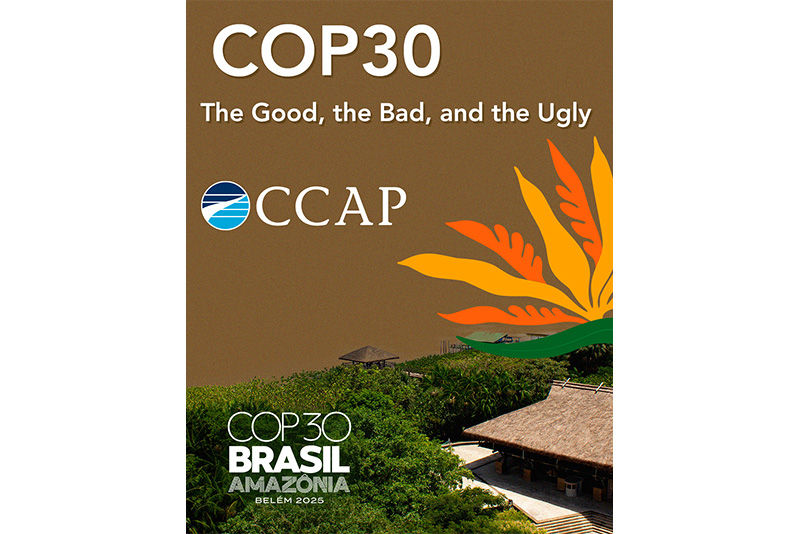Are Transport NAMAs the Key to NDCs?
- Chuck Kooshian
- Nov 16, 2016
- 2 min read

Transport mitigation actions can be complicated, and their effects are notoriously hard to measure. Successful transport Nationally Appropriate Mitigation Actions (NAMAs) are programs that have overcome these challenges and offer valuable lessons about how to link on the ground actions with national GHG-reduction commitments. CCAP and GIZ hosted a session on November 13th that took a good look at the challenges and needs for support in implementing ambitious transport mitigation actions that are also consistent with NDCs and sectoral action plans.
Laurence Blandford, CCAPs Director of International Policy, and Urda Eichhorst, Transport Advisor at GIZ, moderated the event, titled “Towards implementing the Paris Agreement in the transport sector: Linking NDCs and NAMAs”. The session was part of SLoCaT’s Transport Day, a day long side event that focused strictly on transportation issues within the COP framework.
The invited speakers were all from countries implementing transport NAMAs. They described the lessons they had learned from NAMA preparation and implementation, as well as how these NAMAs currently integrate with their countries’ NDCs; to what extent NAMAs are reflected in NDCs or not. The speakers were:
Mr. Agustín Encina Pérez, Vice Minister, Paraguay Ministry of Transport
Mr. Giovanni Pabon, MADS Colombia on TOD NAMA and links to its NDC
Mr. Themba Tenza, DoT South Africa on fuel economy standards in South Africa as NAMA and links to its NDC
Mr. Vu Hai Luu, MoT Vietnam on Vietnam’s low carbon bus NAMA and NDC
The speakers emphasized the importance of transport to their domestic mitigation efforts and reflected on the long-term transformation required, often beyond the timelines of their NDCs. This requires coordination between implementing agencies and environmental agencies for effective MRV of the NAMAs. In Colombia, where CCAP is working to support the implementation of a Transport Oriented Development NAMA, the implementing agency is the development bank FINDETER, but the NAMA decisions are made by a board that includes FINDETER, and representatives of the ministries of Transport, Housing, Environment and Planning.
In many cases NAMA development has been important for understanding potential transport GHG mitigation opportunities, and the steps required for implementation. Again in Colombia, analyses for various NAMAs, along with other studies, helped inform the country’s INDC and evolving low-carbon sector strategy. In South Africa, top down climate policies and goals helped the transport sector identify the strategic priorities within which its own reduction efforts would be anchored.
The country speakers were followed by Ms. Elisabeth Windisch, Ricardo Energy & Environment who discussed how to overcome challenges for transport sector integration in NDCs, highlighting in particular the need to help countries access better data, the importance of accurately evaluation co-benefits to make the case for transportation investments, and the need for inclusive NDC development processes so that sector stakeholders could inform choice made and feel buy-in for their implementation.
Clearly, the transport sector and broader improvements to urban planning are critical to sustainable, climate-smart economies. Understanding what kind of enabling activities can complement the provision of technology and financial support to developing countries will be necessary to ensure that developing countries are empowered to make ambitious, long-term decisions in line with their national circumstances and sustainable development goals.
CCAP will continue to report on our work in Colombia and lessons learned from it.




شيخ روحاني
رقم شيخ روحاني
الشيخ الروحاني
الشيخ الروحاني
شيخ روحاني سعودي
رقم شيخ روحاني
شيخ روحاني مضمون
Berlinintim
Berlin Intim
جلب الحبيب
https://www.eljnoub.com/
https://hurenberlin.com/